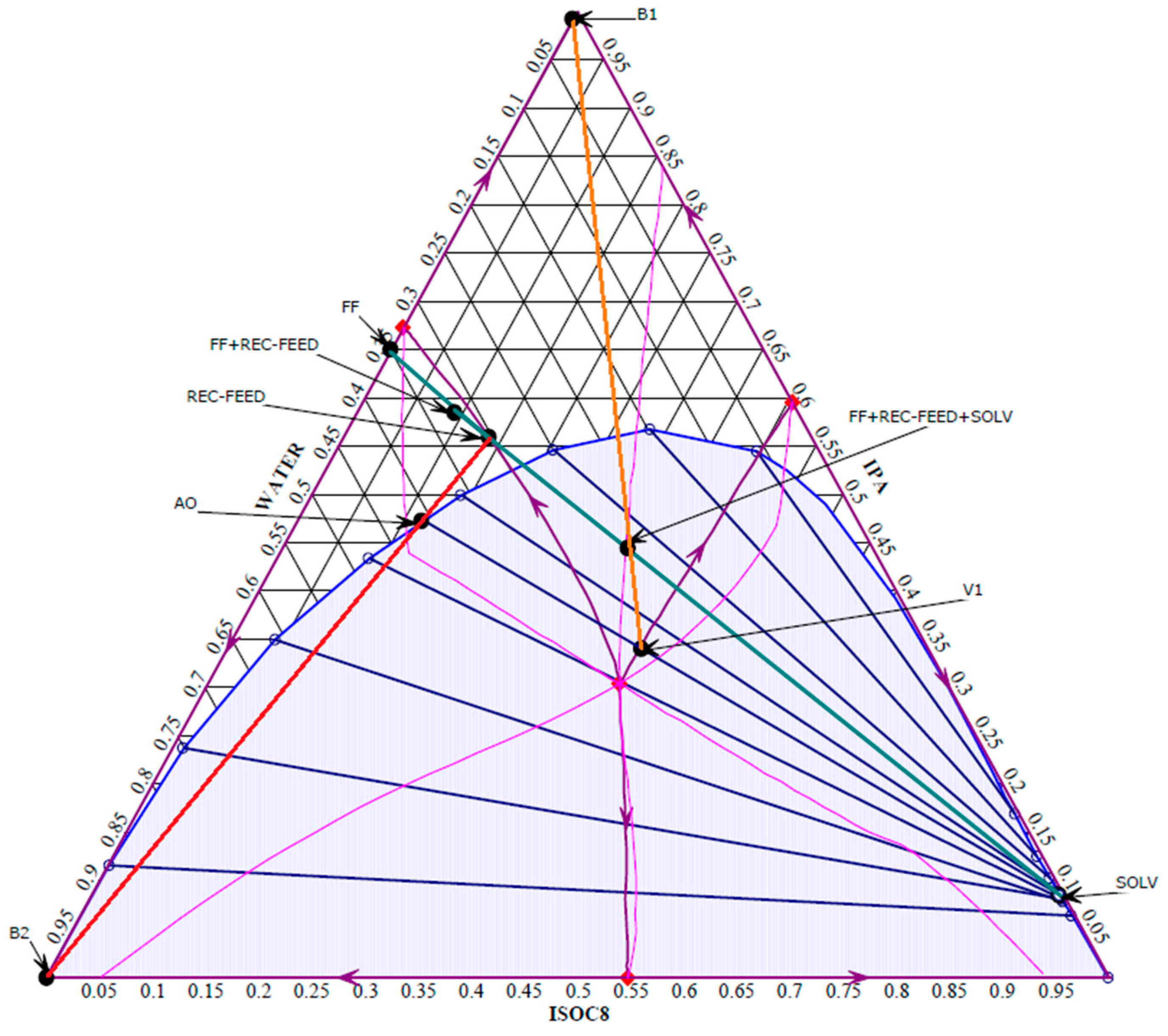
The equilibrium behavior of a three-component liquid-liquid system is typically described using a ternary phase diagram where experimental solubility data are plotted as points, which in turn lie in the binodal curve. Liquid-liquid equilibrium studies of systems composed of water, phenolic compounds and organic solvents are necessary for the evaluation of industrial units for solvent extraction processes 7. From the industrial point of view, knowledge of phase equilibrium is essential in modern process design and control methods 4.

To design and optimize the LLE, liquid-liquid equilibrium data provided by ternary phase diagrams involving a solubility curve and tie-lines are required 5. Its efficiency is based on the physical and chemical properties of a solvent (organic phase) used to separate, purify or concentrate a certain constituent of an aqueous phase 5, 6. It is one of the most important mass transfer processes in chemical engineering and an alternative method to distillation 4.

Liquid-liquid extraction (LLE) is an important unitary operation employed in the chemical industry due to its high efficiency and low energy consumption and environmental impact. For mixtures with concentrations below 40% ethanoic acid, the liquid-liquid extraction process is the most appropriate 1. It is not a real azeotropic mixture, but the equilibrium concentrations of its constituents are very close and therefore requires many stages. The separation of the mixture of ethanoic acid and water is of great economic importance but is particularly difficult because it forms a pinch azeotrope. Its global market demand was 13 million tons in 2015 and is forecast to reach 18 million tons by 2020 3. Its wide range of applications includes its use as a raw material in the production of polymers derived from vinyl acetate, purified terephthalic acid, and esters of acetic anhydride and acetate, and as a solvent in the production of cellulose acetate and in the manufacture of pharmaceutical products 1, 2. Keywords: ethanoic acid, liquid-liquid extraction, ternary phase diagram, binodal curve, tie-lines.Įthanoic acid (C 2H 4O 2) is one of the most widely used and important carboxylic acids in the world. The results showed a good performance of ethyl ethanoate in the extraction of ethanoic acid for concentrations of solute until 16% of the feed. The distribution coefficients and separation factors calculated, made it possible an evaluation of the distribution and of the mutual solubility of the solute in the aqueous and organic phases.

The determination of the composition of the extract and residue portions in the equilibrium of each mixture by of the tie-lines method allowed to examine the percentages of liquid-liquid extraction achieved. The equilibrium data were experimentally obtained by titration at room temperature (298.15 K) and atmospheric pressure (101325 Pa) using four mixtures of water, ethanoic acid, and ethyl ethanoate.

The liquid-liquid extraction was modeled by the construction of a ternary phase diagram for the water/ethanoic acid/ethyl ethanoate system using the Origin software. This article describes the liquid-liquid equilibrium of the extraction process of ethanoic acid (C 2H 4O 2) in aqueous phase using ethyl ethanoate as the solvent.


 0 kommentar(er)
0 kommentar(er)
